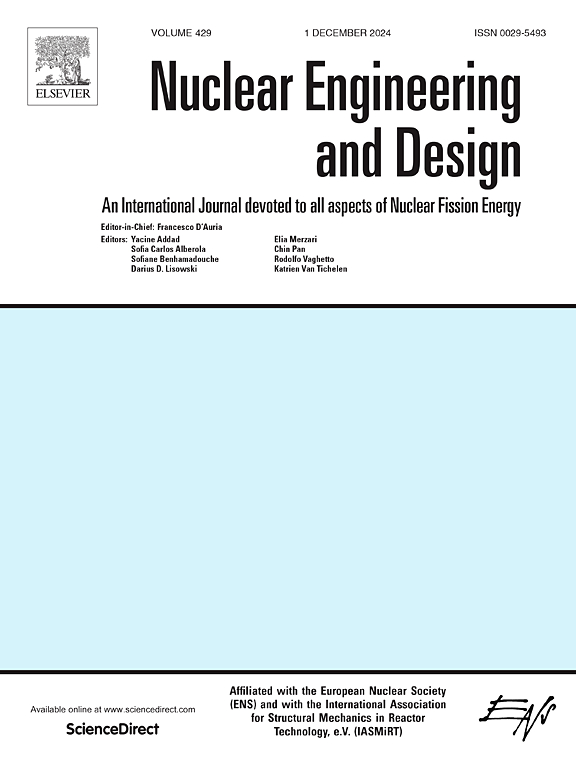The role of CFD combustion modelling in hydrogen safety management — IX: Validation of ETFC model implementation in flameFoam for large-scale hydrogen-air-steam deflagration
IF 1.9
3区 工程技术
Q1 NUCLEAR SCIENCE & TECHNOLOGY
引用次数: 0
Abstract
In the context of CFD simulations for containment safety, Reynolds-Averaged Navier–Stokes (RANS) simulations are the most feasible given the large volume to be simulated. The combustion source term in these cases can be modelled by Turbulent Flame speed Closure (TFC) model, which is designed for fast combustion regimes and might fail to capture flame characteristics at slower regimes. This limitation of the TFC is addressed in an extended model version, the Extended Turbulent Flame speed Closure (ETFC). It should perform just as well in the fast regimes, but also be more accurate in the slower ones. Few studies have attempted to validate the extended model, and the existing ones only obtained good agreement with experiment when implementing user tuned weights. In this study we aim to validate the ETFC model against an experiment without modifying the equations.
CFD simulations of the Upward Propagating Flame Experiment in Hyka A2 experimental facility were performed using the combustion solver flameFoam with both the ETFC and TFC models for comparison. The obtained pressure evolution indicates faster flame propagation prediction by ETFC. Combustion was complete 0.6 s later than in the experiment when using the ETFC, whereas the TFC was late by 0.9 s. The peak value was overestimated by 60 % in the TFC case, but only by 37 % with ETFC. A significant qualitative difference is a second peak, exhibited by the TFC, whereas both the ETFC and the experiment only have one. Flame arrival time analysis reveals that both models reproduce the radial position well in a sense that flames are in the vicinity of thermocouples at experimentally measured times, although the exact positions are somewhat missed. The vertical position, however, was strongly underestimated by the TFC and captured well with the ETFC. Lastly, it was demonstrated that the ETFC combustion rate is sensitive to initial turbulence levels, with higher sensitivity to the turbulent kinetic energy.
Overall, this study demonstrates improved prediction capability of the ETFC in comparison to the TFC both for the flame shape and peak values, and, unlike previous studies, good agreement with the experiment was achieved without tuning the model to match it.
求助全文
约1分钟内获得全文
求助全文
来源期刊

Nuclear Engineering and Design
工程技术-核科学技术
CiteScore
3.40
自引率
11.80%
发文量
377
审稿时长
5 months
期刊介绍:
Nuclear Engineering and Design covers the wide range of disciplines involved in the engineering, design, safety and construction of nuclear fission reactors. The Editors welcome papers both on applied and innovative aspects and developments in nuclear science and technology.
Fundamentals of Reactor Design include:
• Thermal-Hydraulics and Core Physics
• Safety Analysis, Risk Assessment (PSA)
• Structural and Mechanical Engineering
• Materials Science
• Fuel Behavior and Design
• Structural Plant Design
• Engineering of Reactor Components
• Experiments
Aspects beyond fundamentals of Reactor Design covered:
• Accident Mitigation Measures
• Reactor Control Systems
• Licensing Issues
• Safeguard Engineering
• Economy of Plants
• Reprocessing / Waste Disposal
• Applications of Nuclear Energy
• Maintenance
• Decommissioning
Papers on new reactor ideas and developments (Generation IV reactors) such as inherently safe modular HTRs, High Performance LWRs/HWRs and LMFBs/GFR will be considered; Actinide Burners, Accelerator Driven Systems, Energy Amplifiers and other special designs of power and research reactors and their applications are also encouraged.
 求助内容:
求助内容: 应助结果提醒方式:
应助结果提醒方式:


